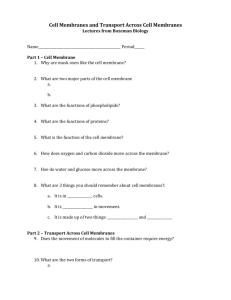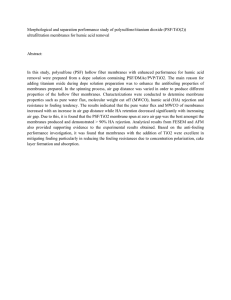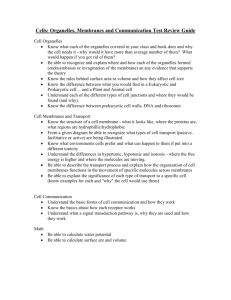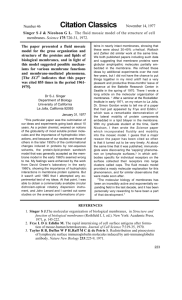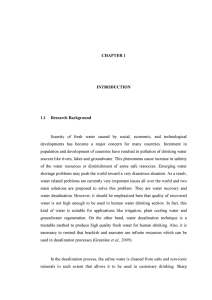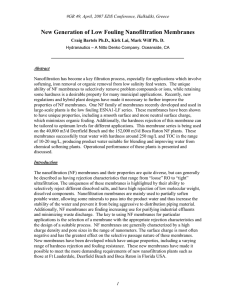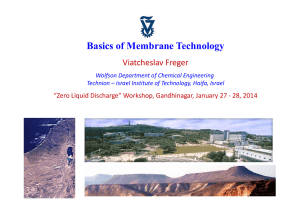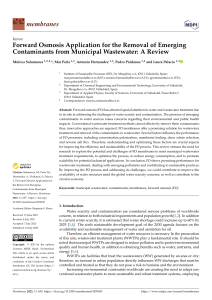LONG-TERM FOULING AND PERFORMANCE OF FORWARD OSMOSIS MEMBRANES
advertisement
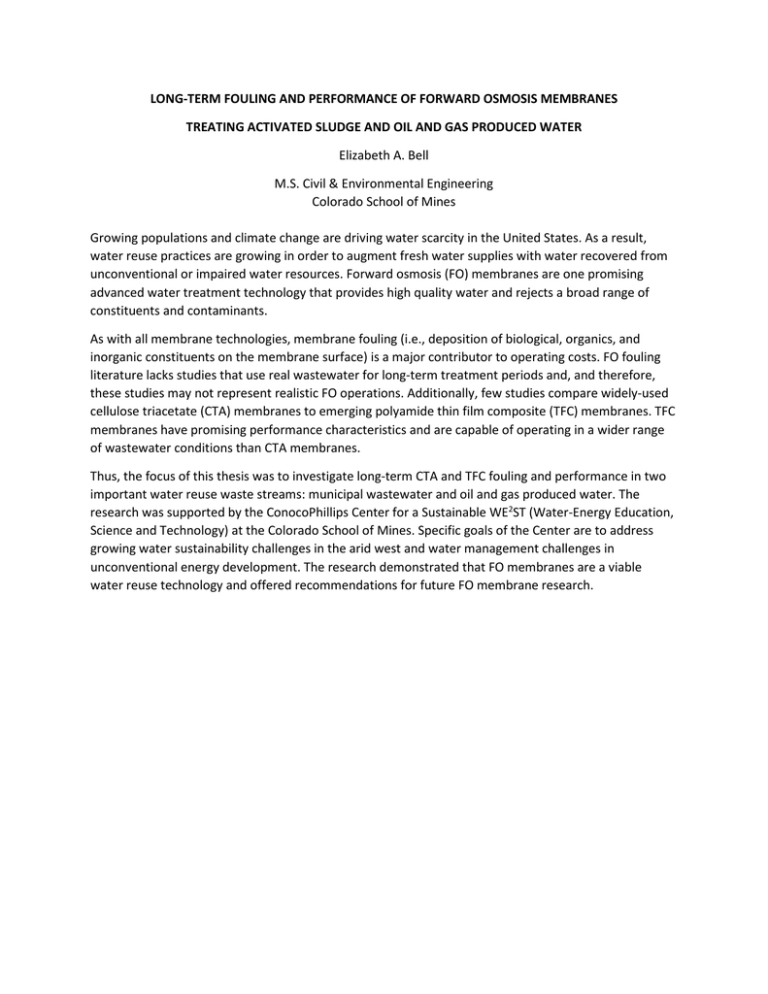
LONG-TERM FOULING AND PERFORMANCE OF FORWARD OSMOSIS MEMBRANES TREATING ACTIVATED SLUDGE AND OIL AND GAS PRODUCED WATER Elizabeth A. Bell M.S. Civil & Environmental Engineering Colorado School of Mines Growing populations and climate change are driving water scarcity in the United States. As a result, water reuse practices are growing in order to augment fresh water supplies with water recovered from unconventional or impaired water resources. Forward osmosis (FO) membranes are one promising advanced water treatment technology that provides high quality water and rejects a broad range of constituents and contaminants. As with all membrane technologies, membrane fouling (i.e., deposition of biological, organics, and inorganic constituents on the membrane surface) is a major contributor to operating costs. FO fouling literature lacks studies that use real wastewater for long-term treatment periods and, and therefore, these studies may not represent realistic FO operations. Additionally, few studies compare widely-used cellulose triacetate (CTA) membranes to emerging polyamide thin film composite (TFC) membranes. TFC membranes have promising performance characteristics and are capable of operating in a wider range of wastewater conditions than CTA membranes. Thus, the focus of this thesis was to investigate long-term CTA and TFC fouling and performance in two important water reuse waste streams: municipal wastewater and oil and gas produced water. The research was supported by the ConocoPhillips Center for a Sustainable WE2ST (Water-Energy Education, Science and Technology) at the Colorado School of Mines. Specific goals of the Center are to address growing water sustainability challenges in the arid west and water management challenges in unconventional energy development. The research demonstrated that FO membranes are a viable water reuse technology and offered recommendations for future FO membrane research.
